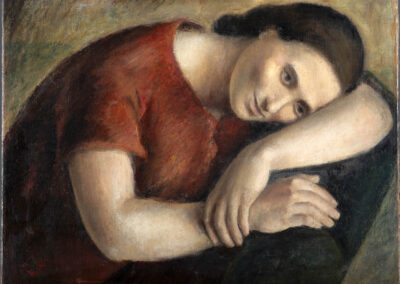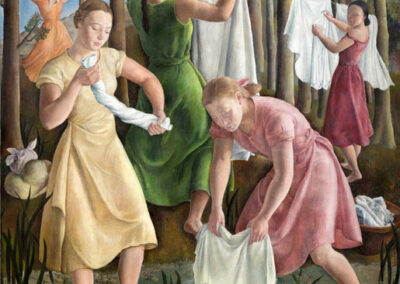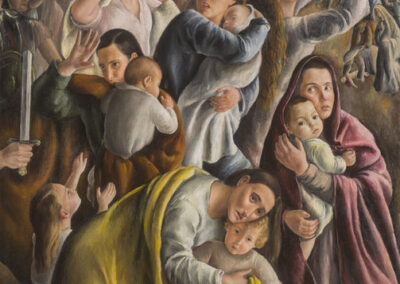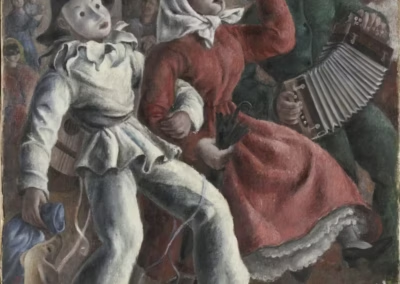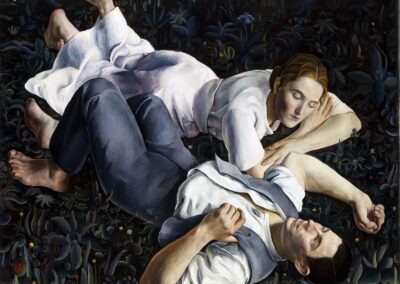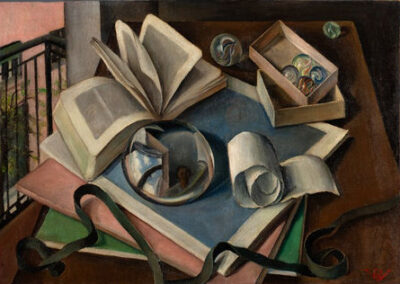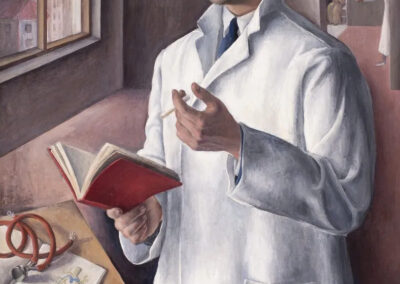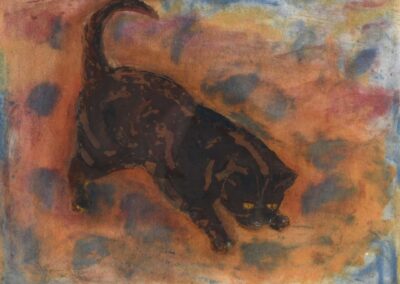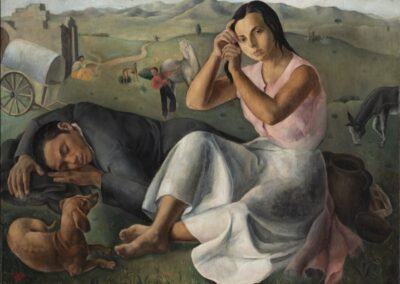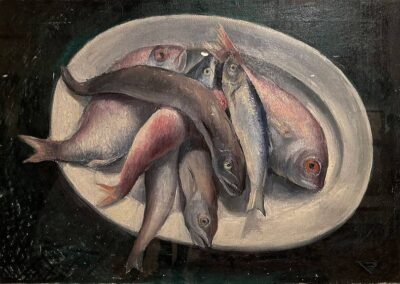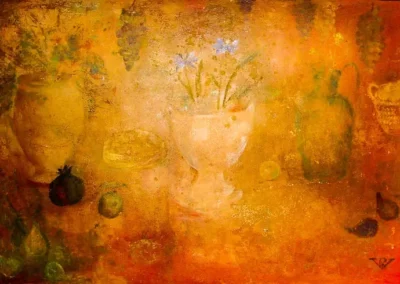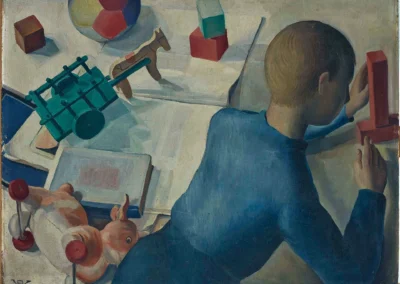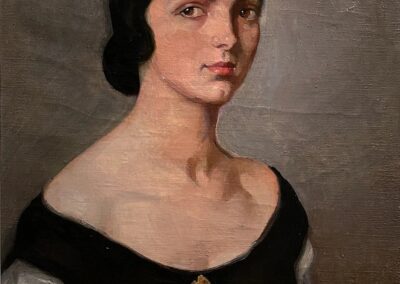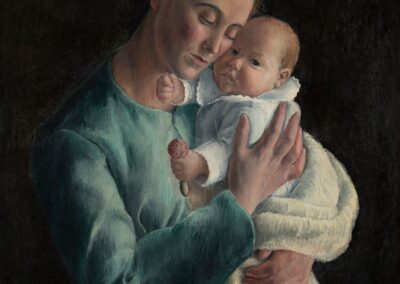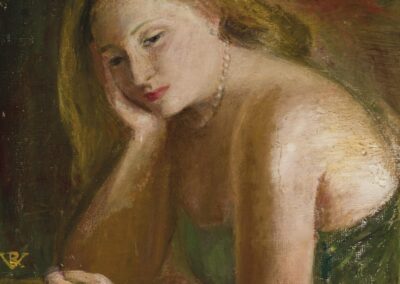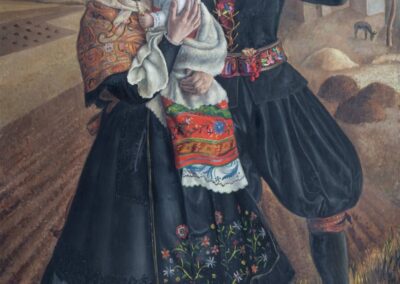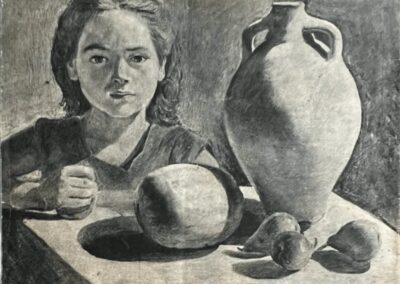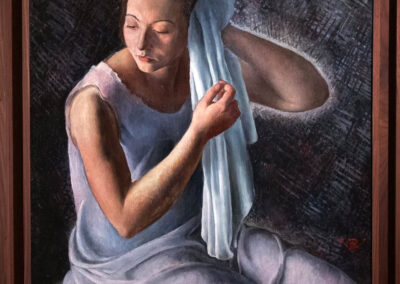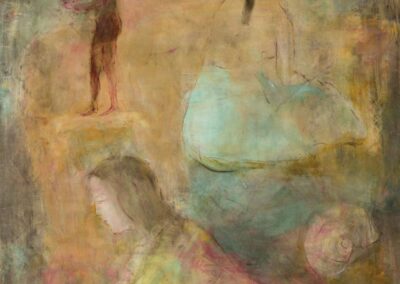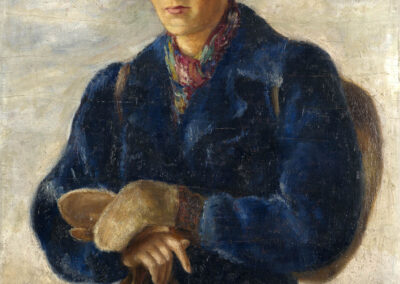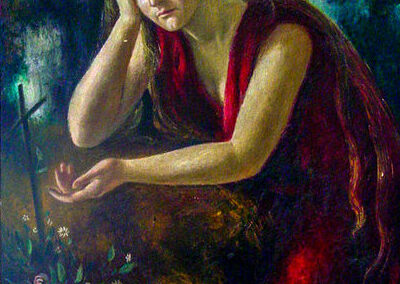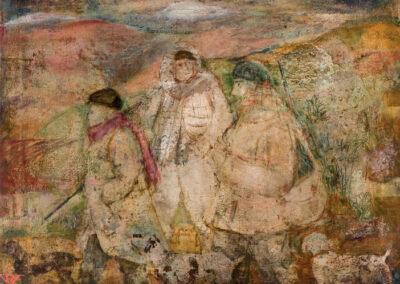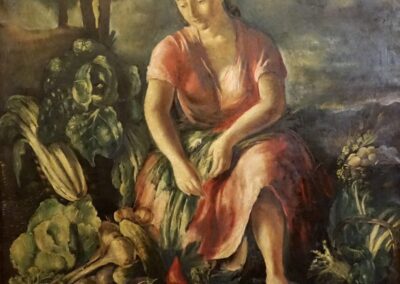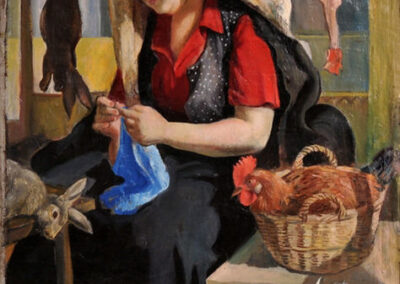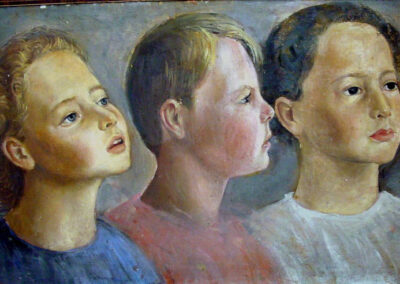The next Artist You Need To Know is Rosario de Velasco (1904 – 1991).
Velasco was a Spanish figurative painter who was a member of the Society of Iberian Artists and also associated with the German New Objectivity movement. She also was a member of the Sinsombrero (part of the Generation of ’27) who were a group of artists, poets and other thinkers who rebelled against stifling traditions in Spain and embraced and explored ideas of modernity and other contemporary movements and ideas.
“Rosario’s paintings convey the creative fervor experienced during the [Spanish] Second Republic (1931-1939), especially among women, which was later cut short by the [Spanish] Civil War. Her work falls within what historians have called the return to order, in which her style is influenced by the European currents of Italian Noucentisme and German New Objectivity, but in which echoes of Cubism, the early Renaissance, and even [German Renaissance artist Albrecht] Dürer‘s painting, which inspired her to create her own signature, can also be seen. “She was able to revisit the themes and styles of historiography in a very modern way, coexisting with avant-garde influences. I think that was the reason why she became one of the most important figures of the time,” notes Elena Rodríguez [the great niece of the artist].” (from here, which is an article about a massive retrospective of Velasco’s artwork at the Thyssen-Bornemisza National Museum several years ago)
Velasco was born in Madrid, Spain in 1904 (although this is a point of contention, as any documentation was – to quote the artist – “burned down in the [first world] war.”)
She was the daughter of a colonel in the Spanish Army (but he was also an amateur artist painting a number of watercolours, who encouraged her artistic leanings) and a Basque woman with strong religious convictions : thus she grew up in a somewhat conservative home but one where there were many books and in an environment that encouraged a wide approach to reading, even within this ‘traditional’ family unit.
Velasco rebelled against this, being assertive and outspoken as a child – her previously mentioned association with the Generation of ’27 and the Sinsombrero are examples of this, especially as the latter translates as ‘the hatless’ and is a nod to how the women of this group refused to don hats in public or religious sites, in opposition to the religious dogma of Velasco’s mother’s faith – but in a contradictory manner she also joined the fascist group Falange Española.
She began painting at an early age and was a student of Fernando Álvarez de Sotomayor y Zaragoza.
In Madrid she associated with some of the most significant artists and creators in that city during this same epoch. This was in the days before the Spanish Civil War when Spain’s cultural and artistic spaces were more open, before falling to the fascist General Franco. Velasco’s flirtation with fascism was not uncommon among many artists of this period in Europe – such as the Futurists, in Italy – but most, like Velasco, soon found themselves rewarded with punitive measures for their dissent from the movement…..
Velasco exhibited at the National Exhibition of Fine Arts for the first time in 1924 : this was the first of seven times she’d be selected for this showcase. A notable instance was in 1932 when her painting Adam and Eve won second medal, breaking new ground for female artists in Spain. She also was featured in several international exhibitions such as when the Society of Iberian Artists showed at the Statens Museum for Kunst in Copenhagen and was also part of an exhibition at the Flechtheim Gallery in Berlin. In 1936, she participated in the exhibition L’art espagnol contemporain. Peinture et sculpture at the Musée du Jeu de Paume in Paris.
She was also part of the Spanish pavilion at the Venice Biennale on five occasions: in 1932, 1934, 1936, 1940 and 1942.
Her association with the fascist Falange (some historians have suggested her religious leanings, manifest in many of her works, fostered her embrace of this movement) caught up to her and during the Spanish Civil War Velasco was briefly imprisoned in Barcelona : her escape was facilitated by her future husband. Post Spanish Civil War, they would settle in Barcelona where they spent the rest of their lives.
Velasco was awarded the San Jorge Prize (1968), and in 1971 the Biosca gallery had a solo exhibition of her work in Madrid.
Her great niece Toya Viudes de Velasco offers the following about the artist : “She was very connected to the artistic reality of the country, but also to the atmosphere of the time. There are still many things we don’t know about her, things we still have to investigate.”
Velasco’s work (though often spoken of as part of a ‘return to order’ art and cultural movement in Spain) is an interesting hybrid of not just significant art historical figures – from Piero Della Francesca to her fellow Spaniard Diego Velazquez – but contemporaneous artists and ideas around Europe at that time, including avant-garde artists such as De Chirico, Braque and her countryman Picasso (one might consider the tumultuous nature of Velasco’s Spain that she would be producing her works simultaneously to Picasso, as a fellow Spaniard, painting Guernica, which offers a very different take on their country and the Spanish Civil War).
In speaking of her paintings – specifically her figurative works – and her sense of her own continuity in the larger history of art, Velasco asserted that “where others have gone, I can go.”
Velasco died in Barcelona in 1991. She was 86 years old.
Over three decades later, in 2024, the Thyssen Museum, in collaboration with the Museum of Fine Arts of Valencia, organized a solo exhibition of Rosario de Velasco’s work. It brought together some 30 paintings from private collections that had been lost while also drawing upon works in the collections of the two galleries that mounted the show. This undertaking was co curated by Velasco’s great-niece : the journalist Toya Viudes de Velasco.
In the exhibition catalogue for this endeavour curator and writer Estrella de Diego offers that “Rosario de Velasco has something of [Andrea] Mantegna in her play of perspective, which is difficult to describe, as is the case with the works of Norah Borges, Maruja Mallo, or Ángels Santos. It is a question of space from a bird’s eye view.”
Her works can be found in the collections of Museo Reina Sofía and Centre Pompidou : many of her works, however, have gone missing (though the aforementioned retrospective had a media campaign that was successful in locating many previously ‘lost’ artwork), and there is a poverty of information about Velasco compared to other artists of this period.
A more extensive listing of her exhibitions can be seen here, and much more about Velasco’s life and art can be seen here.

